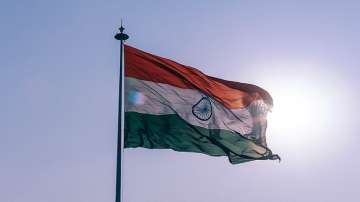Independence Day 2021: History, significance and interesting facts about tricolour
Did you know that the existing tricolour is not the first flag that was designed as our national flag? Here are some interesting facts about the tricolour.

Independence Day 2021: August 15, India's Independence day, is one of the most significant days in our country's history when we got freedom from the British Empire in the year 1947 and the first Prime Minister of Independent India, Pandit Jawaharlal Nehru hoisted the Indian national flag above the Lahori Gate of Red Fort in New Delhi.
Also known as the Tricolor or Tiranga, the flag is considered an integral part of the Indian freedom movement and has a rich history. As we celebrate the 75th Independence Day this year, let’s revisit the history, evolution, and some interesting facts about the Indian tricolour.
ALSO READ: Independence Day: Why we 'hoist' the tricolour on August 15 and 'unfurl' it on January 26
Did you know that the existing tricolour is not the first flag that was designed as our national flag? Until it was adopted in its existing form, the Indian flag has undergone a lot of transformation.
On July 22, 1947, the National flag of India was adopted in its present form (horizontal rectangular tricolour) during a meeting of the Constituent Assembly, 23 days before India’s Independence, and became the official national flag of the Dominion of India on August 15, 1947.
Significance of Indian tricolour
Saffron (Kesari): The Saffron colour at the top indicates the strength and courage of the country.
White colour: It represents the purity, honesty, and peace of the nation.
Ashoka Chakra: The Ashoka Chakra, at the centre of the flag, is the wheel of the law of dharma. It signifies that there is life in movement and death in stagnation.
Green colour: The green colour at the bottom represents prosperity, growth and fertility of the land.
ALSO READ: How did August 15, 1947 become the day India had its 'Tryst with Destiny'?
Indian tricolour: Some interesting facts
- The flag was subsequently retained as that of the Republic of India.
- Did you know the present National flag was designed in 1916? The Indian tricoloured flag was designed in the year 1916 by Pingali Venkayya of Macchilipatnam.
- Interestingly, the flag made from khadi which is domestically spun Indian cotton as a symbol of nationalism and freedom.
- The Bureau of Indian Standards had laid out the manufacturing process and specifications for the flag, while the right to manufacture the flag is held by the Khadi Development and Village Industries Commission.
- The Flag Code of India governs the usage of the Indian National flag and other laws relating to the national emblems.
- In 1921. Mahatama Gandhi initially proposed a flag to the Indian National Congress, which was designed by Pingali Venkayya. In the center was a traditional spinning wheel, symbolising Gandhi's goal of making Indians self-reliant by fabricating their own clothing, between a red stripe for Hindus and a green stripe for Muslims.
- The design was later modified to replace red with saffron and to include a white stripe in the center for other religious communities, and provide a background for the spinning wheel. Subsequently, to avoid sectarian associations with the colour scheme, the three bands were assigned new meanings: courage and sacrifice, peace and truth, and faith and chivalry respectively.
- A modified version of the Swaraj flag was later chosen. The tricolour remained the same saffron, white and green, however, the charkha was replaced by the Ashoka Chakra representing the eternal wheel of law.
- The philosopher Sarvepalli Radhakrishnan, who later became India's first Vice President and second President, clarified the adopted flag and described its significance as follows:
- Bhagwa or the Saffron denotes renunciation or disinterestedness. Our leaders must be indifferent to material gains and dedicate themselves to their work. The white in the center is light, the path of truth to guide our conduct. The green shows our relation to (the) soil, our relation to the plant life here, on which all other life depends. The "Ashoka Chakra" in the center of the white is the wheel of the law of dharma. Truth or Satya, dharma or virtue ought to be the controlling principle of those who work under this flag. Again, the wheel denotes motion. There is death in stagnation. There is life in movement. India should no more resist change, it must move and go forward. The wheel represents the dynamism of a peaceful change.